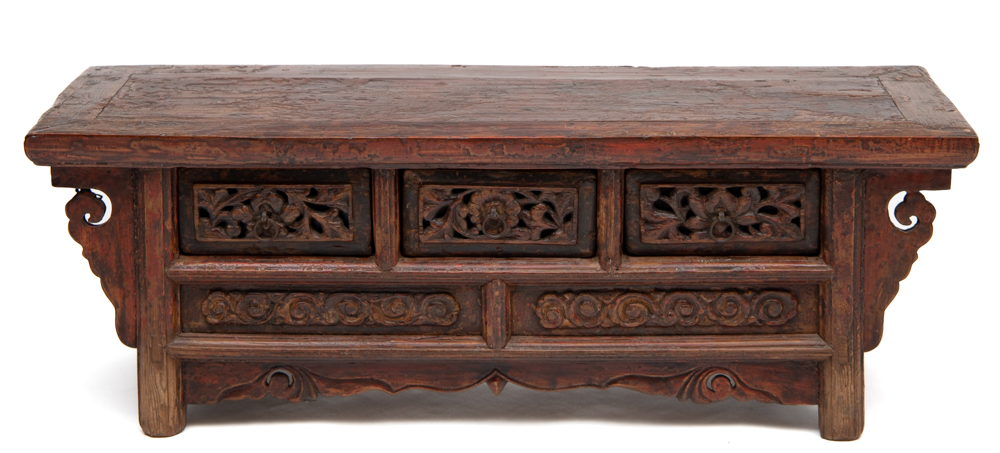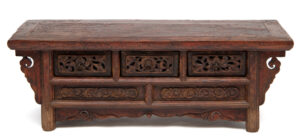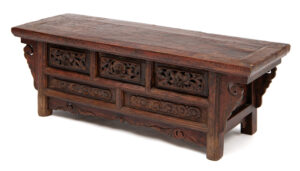Three drawer kang table with deep relief floral motifs
$2,250.00
18th century
- elm
- 109cm W x 38cm D x 37.5cm H
A shipping fee is calculated to deliver this item to the metropolitan areas of Brisbane, Sydney, Melbourne, Adelaide and Perth. Contact us to arrange a quote for delivery to other areas.
Very old and rare table to make a feature piece in the home.
1 in stock
Make an EnquiryNote: Shipping of art is free in Australia






